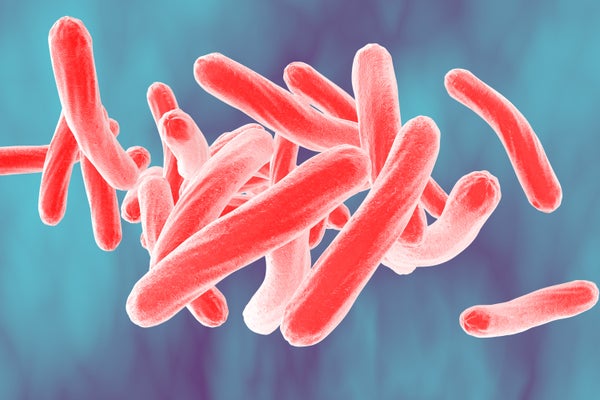The U.S. Food and Drug Administration has approved a drug regimen to treat an extreme form of multi-drug-resistant tuberculosis (TB).
Nearly 90% of people infected with extensively drug-resistant (XDR) TB who took this treatment during a clinical trial recovered in 6 months. The average success rate for drug regimens currently used to treat XDR TB is around 34%.
New TB drugs are desperately needed, and the XDR TB regimen approved on 14 August could quickly reach patients—as long as it’s priced affordably, says Sharonann Lynch, TB policy advisor for the aid group Médecins Sans Frontières (also known as Doctors Without Borders), who is based in New York City.
On supporting science journalism
If you're enjoying this article, consider supporting our award-winning journalism by subscribing. By purchasing a subscription you are helping to ensure the future of impactful stories about the discoveries and ideas shaping our world today.
Out of reach
One drug in the combination—called pretomanid—is only the third new TB therapy to be approved globally in nearly 50 years. Pharmaceutical companies didn’t develop TB treatments for decades because the illness mostly affects the world’s poorest people, who can’t afford high-priced drugs. But donations to researchers from governments and philanthropists in the early 2000s sparked work on new TB therapies, including pretomanid.
“Drug-resistant TB is the largest single source of antimicrobial resistance in the world,” says Mel Spigelman, president of the TB Alliance, a non-profit research group in New York City that developed the latest therapy. But tackling drug resistance is possible if researchers have sufficient funding to develop treatments, he says.
The therapies must also be priced low enough so that impoverished people can access them, says Lynch. Two other therapies that were approved to treat multi-drug resistant TB—bedaquiline in 2012 and delaminid in 2014—cost hundreds to thousands of dollars for a six-month supply. “Only 20% of people who could have benefited from bedaquiline got it because of the price,” Lynch says.
The TB Alliance is currently negotiating a price for the latest treatment with the two pharmaceutical companies that will manufacture the drugs. Given the relatively high cost of one component, bedaquiline, Lynch is concerned. “Our ballpark price is a dollar a day,” she says.
A growing resistance
Roughly half a million people worldwide are diagnosed with multi-drug-resistant TB each year, and about 8.5% of those people have XDR TB, according to the World Health Organization (WHO). Common TB treatments don’t work on XDR TB, so people with this extreme form of the disease need to take a combination of around eight drugs for more than year. But the drugs can come with serious side-effects, such as deafness, and up to two-thirds of people with XDR TB still die, according to the WHO.
Figures from the WHO show that drug-resistant strains of TB account for an increasing proportion of TB cases around the world each year, even though the overall number of cases has declined. South Africa had more than 1,200 cases of XDR TB in 2012, a ten-fold increase from 2002.
The availability of bedaquiline and delaminid hasn’t yet led to significant reductions in the high number of TB deaths in part because the therapies are expensive, Spigelman says—and also because doctors initially weren’t sure how to use the drugs in combination with other therapies. Doctors treat TB with drug cocktails to reduce the chances that the bacterium that causes the illness will evolve resistance to a particular therapy. But bedaquiline and delaminid were approved as stand-alone drugs, not as part of a regimen.
Spigelman hopes that pretomanid will be included in treatments faster than the other therapies because the TB Alliance tested pretomanid in combination with other TB drugs from the start.
This article is reproduced with permission and was first published on August 14, 2019.
